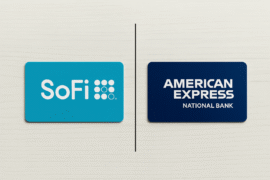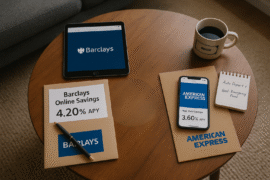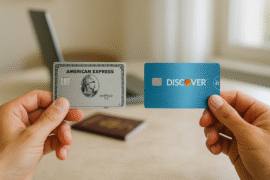This article may contain references to products or services from one or more of our advertisers or partners. We may receive compensation when you click on links to those products or services. Nonetheless, our opinions are our own.
The information presented in this article is accurate to the best of our knowledge at the time of publication. However, information is subject to change, and no guarantees are made about the continued accuracy or completeness of this content after its publication date.
- Key Highlights
- Introduction
- Understanding PayPal Business Fees
- Strategies to Lower Your PayPal Fees
- Conclusion
-
Frequently Asked Questions
- How Can I Estimate My Monthly PayPal Fees?
- Is There a Way to Receive International Payments Without High Fees?
- What are the typical fees associated with using PayPal for business transactions?
- Are there any strategies for reducing PayPal fees for businesses?
- How can a business maximize profits while using PayPal as a payment method?
- Are there alternative payment methods that may be more cost-effective than PayPal?
- Recommended Reads
Key Highlights
- Understanding PayPal business fees is essential for maximizing profits, especially for small businesses engaged in international transactions.
- This guide provides a breakdown of different fee types, including those for domestic and international transactions, currency conversions, and chargebacks.
- Learn practical tips and strategies to potentially minimize your PayPal fees, putting more money back in your pocket.
- Discover how optimizing your account settings, choosing the right fee structure, and leveraging micropayment rates can help you save.
- We’ll also explore the possibility of using the Friends and Family option for zero-fee transactions, within PayPal’s terms of service, of course.
- Finally, get answers to frequently asked questions about estimating monthly fees, international payments, and more.
Introduction
In today’s online world, having an easy payment system is very important for small businesses. This is especially true for those that deal with international transactions. PayPal stands out as a top choice, making it easy to send and receive money. Still, like other financial services, PayPal does charge fees for its use. These fees can change depending on things like the type of transaction, currency conversion, and how your account is set up.
Understanding PayPal Business Fees
When you use PayPal for your business, knowing about the fees is very important. The merchant fees usually include a percentage of the transaction amount and a fixed fee. The percentage fee changes based on different things, like the type of transaction and if it’s domestic or international. Typically, domestic transactions have lower fees than international transactions.
Additionally, there can be other fees for things like currency conversions, chargebacks, or special services like micropayments. If you know about these fees, you can calculate your costs better. This will help you price your products or services fairly and keep good profit margins.
Strategies to Lower Your PayPal Fees
Optimize Your Account Settings
Start your journey to lower fees by optimizing your PayPal account settings. One thing you might forget is to link your bank account directly to your PayPal account. This usually allows for free withdrawals to your bank. This can help reduce transaction costs compared to using debit cards.
Additionally, reviewing PayPal’s fee structure in your region ensures you’re not paying unnecessary charges. Some regions have lower-cost alternatives or special business rates.
Choose the Right PayPal Fee Structure
Did you know that PayPal offers different fee structures? Choosing the optimal one for your business model can lead to significant savings. For example, if you primarily receive payments via alternative payment methods (APMs) like Venmo or American Express, opting for an APM-specific fee structure might be advantageous.
| Fee Structure | Description |
|---|---|
| Standard Rate | Applies to most commercial transactions, typically involving a percentage and fixed fee. |
| APM Transaction Rates Apply | Might be beneficial if you frequently receive payments via APMs. |
Utilize Friends and Family Option for Zero Fees
PayPal’s Friends and Family option is designed mainly for personal use, allowing trusted people to send and receive money without fees. This option is handy when you want to pay back employees or get money from friends and family for non-business costs.
However, using this option for business transactions violates PayPal’s terms of service and may lead to account limitations or closures. Additionally, this option does not provide seller protection, meaning you could be at risk if a dispute arises.
Leverage Micropayment Rates for Smaller Transactions
If your business processes frequent small transactions, PayPal’s micropayment rates may help lower costs. These rates offer reduced transaction fees for payments below a certain threshold, making them ideal for businesses that handle a high volume of low-value transactions.
Before opting for micropayment rates, analyze your average transaction size. If your payments consistently fall below the required threshold, this can be a smart way to reduce PayPal fees.
Conclusion
PayPal business fees can impact profitability, but by implementing strategic cost-saving measures, businesses can reduce these expenses. Optimizing account settings, choosing the best fee structure, and leveraging micropayment rates can lead to significant savings. By staying informed on PayPal’s latest fee policies and exploring alternative payment methods, businesses can improve their financial efficiency and maximize profits.
Frequently Asked Questions
How Can I Estimate My Monthly PayPal Fees?
To estimate your PayPal merchant fees, consider the transaction amount, payment type (credit card, bank transfer, etc.), domestic vs. international transactions, and currency conversion fees. Use PayPal’s fee calculator for an accurate estimate.
Is There a Way to Receive International Payments Without High Fees?
International transactions typically incur higher fees due to currency conversion and international transaction rates. Consider exploring alternative payment processors, negotiating rates with PayPal, or using a bank with favorable exchange rates to reduce costs.
What are the typical fees associated with using PayPal for business transactions?
Typical PayPal business fees include merchant fees (percentage + fixed fee per transaction), chargeback fees, currency conversion fees, and additional fees for premium services. Reviewing PayPal’s official fee structure can help you determine exact costs.
Are there any strategies for reducing PayPal fees for businesses?
Yes! Some effective strategies include encouraging customers to use bank transfers, selecting the most cost-effective fee structure, applying for nonprofit rates if eligible, and reducing disputes to avoid excessive chargeback fees.
How can a business maximize profits while using PayPal as a payment method?
Small businesses can boost their profits by understanding PayPal’s fee structures, optimizing payment methods, and using cost-saving strategies like micropayment rates. Regularly reviewing and adjusting account settings can also help reduce unnecessary fees.
Are there alternative payment methods that may be more cost-effective than PayPal?
Yes! Alternatives like Stripe, Square, and direct bank transfers may offer lower transaction fees depending on your business model and customer base. Compare different payment processors to find the best fit for your needs.

Reviewed and edited by Albert Fang.
See a typo or want to suggest an edit/revision to the content? Use the contact us form to provide feedback.
At FangWallet, we value editorial integrity and open collaboration in curating quality content for readers to enjoy. Much appreciated for the assist.
Did you like our article and find it insightful? We encourage sharing the article link with family and friends to benefit as well - better yet, sharing on social media. Thank you for the support! 🍉
Article Title: PayPal Business Fee: Tips to Reduce Costs and Maximize Profits
https://fangwallet.com/2025/02/13/paypal-business-fee/The FangWallet Promise
FangWallet is an editorially independent resource - founded on breaking down challenging financial concepts for anyone to understand since 2014. While we adhere to editorial integrity, note that this post may contain references to products from our partners.
The FangWallet promise is always to have your best interest in mind and be transparent and honest about the financial picture.
Become an Insider

Subscribe to get a free daily budget planner printable to help get your money on track!
Make passive money the right way. No spam.
Editorial Disclaimer: The editorial content on this page is not provided by any of the companies mentioned. The opinions expressed here are the author's alone.
The content of this website is for informational purposes only and does not represent investment advice, or an offer or solicitation to buy or sell any security, investment, or product. Investors are encouraged to do their own due diligence, and, if necessary, consult professional advising before making any investment decisions. Investing involves a high degree of risk, and financial losses may occur including the potential loss of principal.
Source Citation References:
+ Inspo












































